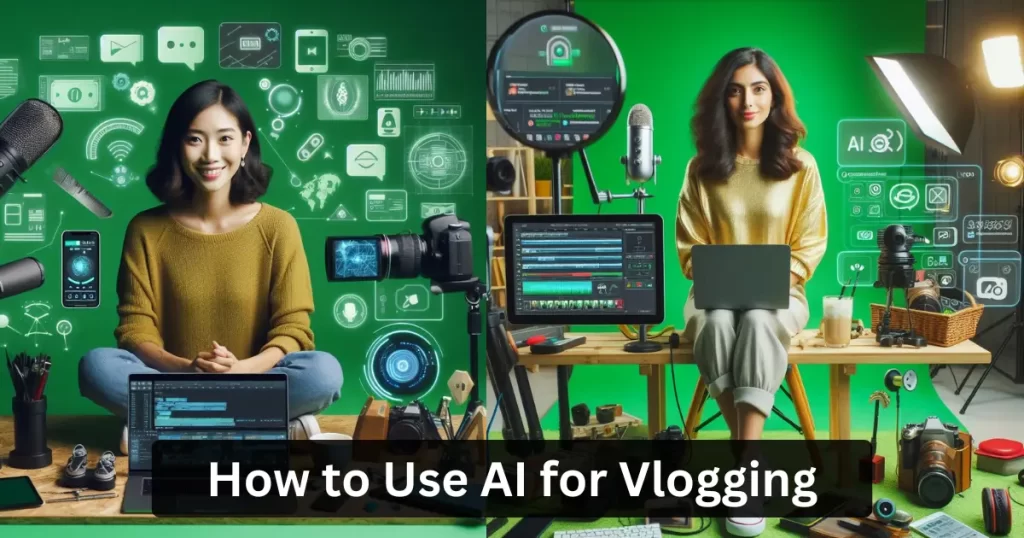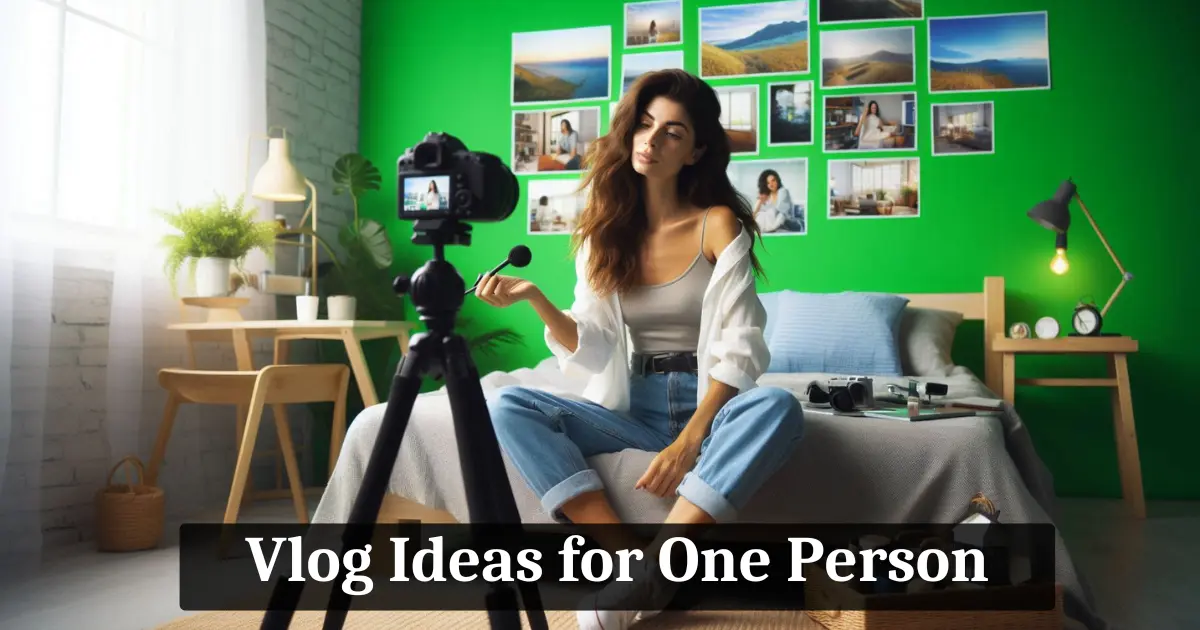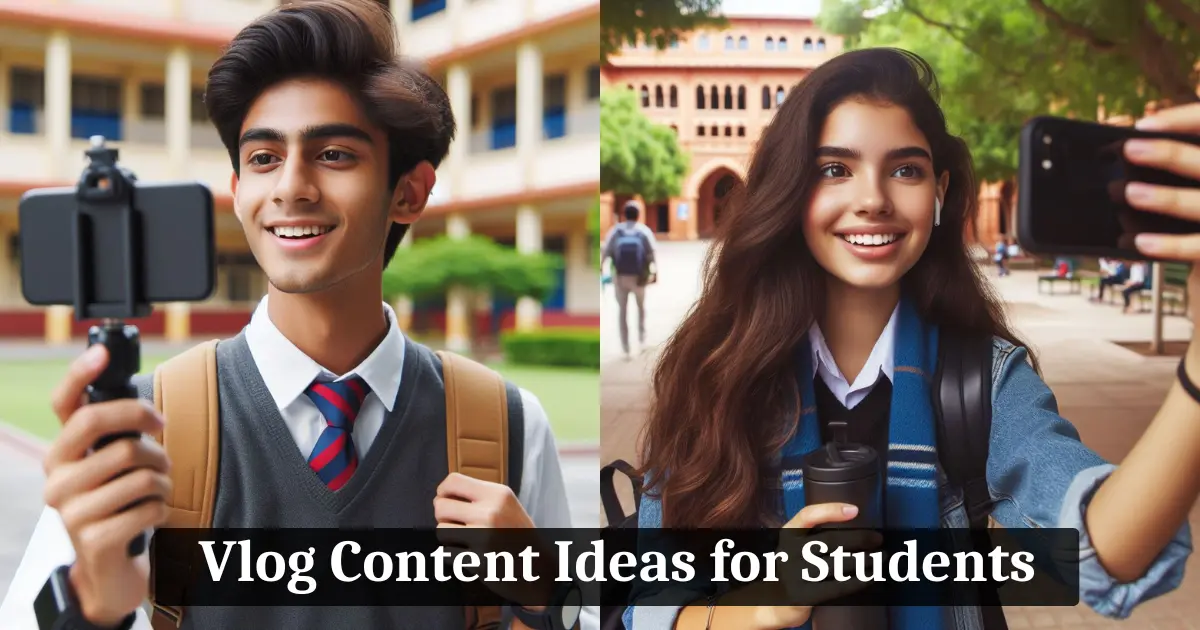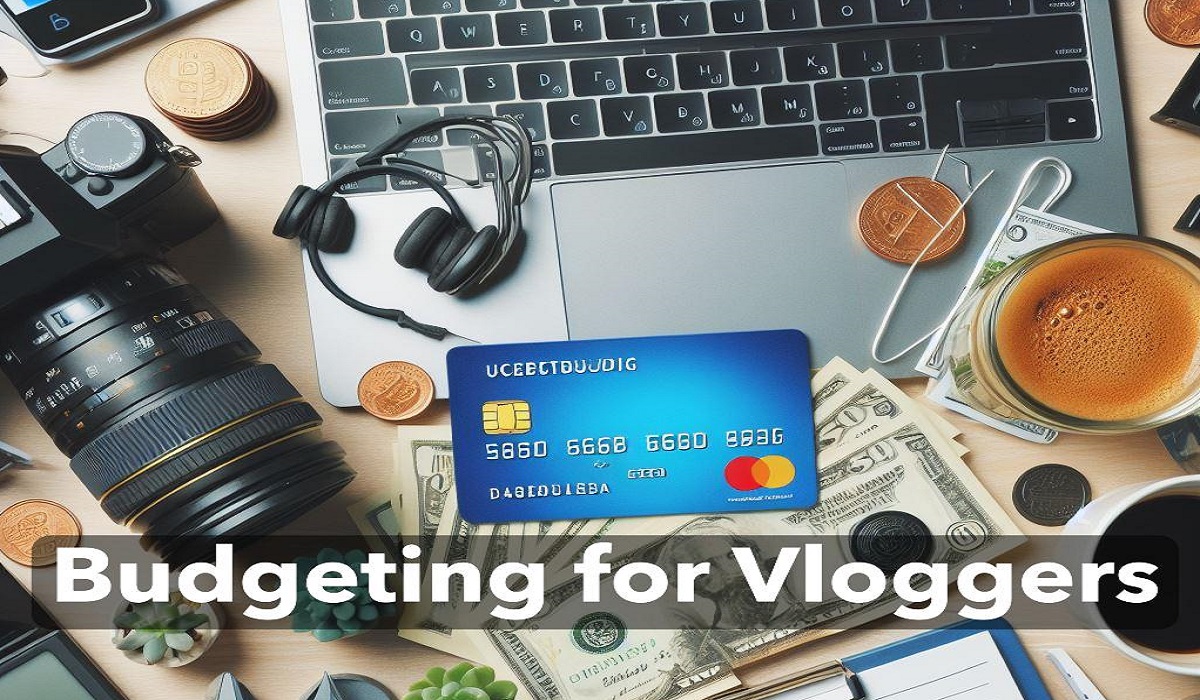How to Use AI for Vlogging: Tips, Tools, and Best Practices 2024

Vlogging, or video blogging, is a popular form of online content creation that involves sharing personal or professional experiences, opinions, or insights through videos. Vlogging can be a fun and rewarding hobby, a creative outlet, or a lucrative career for many people.
However, vlogging also comes with some challenges, such as finding the right topics, creating engaging scripts, editing videos, adding voiceovers and subtitles, and enhancing videos with graphics and effects.
These tasks can be time-consuming, tedious, or expensive for vloggers, especially if they do not have the skills, tools, or resources to do them well.
Fortunately, there is a solution that can help vloggers overcome these challenges and create better content faster and easier: artificial intelligence (AI).
AI is the technology that enables machines to perform tasks that normally require human intelligence, such as understanding language, recognizing images, generating speech, and learning from data.
How to Use AI for Vlogging
AI can help vloggers in various ways, such as generating video scripts from text, editing videos with text prompts, creating voiceovers and subtitles for videos, and enhancing videos with stock footage and graphics.
In this article, we will explore how vloggers can use AI to improve their vlogging process and results. We will also provide some examples of AI tools that vloggers can use, as well as some tips and best practices for using AI for vlogging. Let’s get started!
How AI can generate video scripts from text
One of the first steps in vlogging is to come up with a topic and a script for your video. This can be challenging, especially if you are not confident in your writing skills, or if you do not have enough time or ideas to write a script.
Moreover, writing a script for a video is different from writing a script for a blog post or an article, as you need to consider the visual and audio aspects of your video, such as the clips, transitions, music, and voiceovers.
AI can help you with this task by generating video scripts from text. This means that you can simply type in any text input, such as a keyword, a headline, a paragraph, or an outline, and AI will turn it into a video script with clips, subtitles, music, and transitions. You can then review, edit, or customize the script as you wish, or use it as it is.
InVideo
One example of an AI tool that can generate video scripts from text is Invideo AI. InVideo AI is an online platform that allows you to create stunning videos from any text input in minutes.
You can choose from hundreds of templates, categories, and genres, or start from scratch. You can also adjust the video length, style, tone, and language, as well as add your logo, watermark, or voiceover.
InVideo AI is free to use for up to 15 minutes of video per month and offers affordable plans for more features and unlimited videos. Some other AI tools are:
- Lumen5
- Synthesia
- Vidnami
- Wochit
Using AI to generate video scripts from text can save you a lot of time and effort, as you do not have to write scripts from scratch, or face the camera if you do not want to.
You can also produce more videos without compromising on quality, as AI can help you create engaging and relevant scripts for your audience.
Also Read:
8 Best AI Video Editor Online Free: Make Professional-Quality Videos
How to Make Vlog Reels That Go Viral in 2024
How to Earn Money in Vlogging: The Ultimate Guide to Turning Your Passion into Profit
How AI can edit videos with text prompts
Another step in vlogging is to edit your videos. Editing videos can be a tedious and complex process, as you need to use software that can handle various formats, resolutions, and effects.
You also need to know how to cut, trim, crop, rotate, zoom, merge, split, and adjust your videos, as well as add filters, transitions, text, stickers, and music. Editing videos can also be expensive, as some software can cost hundreds of dollars, or require a subscription fee.
AI can help you with this task by editing videos with text prompts. This means that you can simply type in simple commands, such as “add a title”, “zoom in”, “fade out”, or “add music”, and AI will make the changes to your video accordingly.
You can also use natural language, such as “make the video more upbeat”, “remove the background noise”, or “add a funny sound effect”, and AI will understand your intent and edit your video accordingly. One example of an AI tool that can edit videos with text prompts is Kapwing.
Kapwing
Kapwing is an online platform that allows you to edit any video with simple commands. You can upload your video, or use a URL from YouTube, TikTok, Instagram, or any other platform.
You can then type in your commands, and Kapwing will apply them to your video in real time. You can also use Kapwing’s intuitive interface to make further edits, such as cropping, resizing, trimming, adding subtitles, and more.
Kapwing is free to use for up to 250 MB of video per month and offers affordable plans for more features and unlimited videos. Some other AI tools are:
- Descript
- Type Studio
- Clipchamp
- Magisto
Using AI to edit videos with text prompts can make your editing process faster and easier, as you do not have to learn complex software, or spend hours on manual edits.
You can also make your videos more creative and personalized, as AI can help you add effects and elements that suit your style and mood.
How AI can generate voiceovers and subtitles for videos
Another step in vlogging is to add voiceovers and subtitles to your videos. Voiceovers and subtitles can make your videos more accessible and engaging, as they can help your audience understand your message better, especially if they have hearing impairments, speak a different language, or prefer to watch videos without sound.
However, adding voiceovers and subtitles to your videos can be challenging, as you need to record your voice, sync it with your video, transcribe your speech, translate it into different languages, and format it properly.
AI can help you with this task by generating voiceovers and subtitles for your videos. This means that you can simply upload your video, and AI will create human-sounding voiceovers and captions for your video in different languages.
You can then review, edit, or customize the voiceovers and subtitles as you wish, or use them as they are. One example of an AI tool that can generate voiceovers and subtitles for videos is FlexClip.
FlexClip
FlexClip is an online platform that allows you to create voiceovers and subtitles for any video in minutes. You can upload your video, or use a URL from YouTube, Vimeo, or any other platform.
You can then choose from dozens of languages and accents, and FlexClip will generate realistic voiceovers and captions for your video. You can also adjust the speed, pitch, volume, and tone of the voiceovers, as well as the font, color, size, and position of the subtitles.
FlexClip is free to use for up to 12 minutes of video per month and offers affordable plans for more features and unlimited videos. Some other AI tools are:
- Voiceful
- VoiceBunny
- Happy Scribe
- Subly
Using AI to generate voiceovers and subtitles for videos can help you reach a global audience and make your videos more accessible and engaging, as you do not have to record your voice, transcribe your speech, or translate your subtitles manually.
You can also make your videos more professional and consistent, as AI can help you create high-quality voiceovers and subtitles that match your video content and style.
How AI can enhance videos with stock footage and graphics
Another step in vlogging is to enhance your videos with stock footage and graphics. Stock footage and graphics can help you improve the quality and appeal of your videos, as they can add visual interest, context, and variety to your videos.
However, finding and using stock footage and graphics can be difficult, as you need to search for relevant and royalty-free images and videos, download them, and insert them into your videos.
You also need to make sure that the stock footage and graphics match your video content and style, and do not violate any copyrights or trademarks.
AI can help you with this task by enhancing your videos with stock footage and graphics. This means that you can simply upload your video, and AI will scan your video and add relevant images and animations to your video automatically.
You can then review, edit, or customize the stock footage and graphics as you wish, or use them as they are. One example of an AI tool that can enhance videos with stock footage and graphics is Deepbrain AI.
Deepbrain AI
Deepbrain AI is an online platform that allows you to enhance any video with images and animations in seconds. You can upload your video, or use a URL from YouTube, Facebook, or any other platform.
You can then choose from thousands of categories and genres, and Deepbrain AI will analyze your video and add appropriate images and animations to your video.
You can also adjust the frequency, duration, and position of the images and animations, as well as add your logo, watermark, or voiceover.
Deepbrain AI is free to use for up to 10 minutes of video per month and offers affordable plans for more features and unlimited videos. Some other AI tools are:
- Artgrid
- Storyblocks
- Canva
- Animoto
Using AI to enhance videos with stock footage and graphics can help you create professional-looking videos without hiring a designer or buying expensive assets, as you do not have to search for, download, or insert stock footage and graphics manually.
You can also make your videos more interesting and relevant, as AI can help you add images and animations that suit your video content and style.
Also Read:
9 Best AI Video Editors You Need to Try Right Now
Best Vlog Editing Software for Windows Free
How to Become a Lifestyle Vlogger and Turn Your Passion into Profit
FAQs:
Can I use AI to make YouTube videos?
Yes, you can use AI to make YouTube videos by using AI tools that can help you with various tasks, such as generating video scripts from text, editing videos with text prompts, creating voiceovers and subtitles for videos, and enhancing videos with stock footage and graphics. Some examples of AI tools for YouTube videos are InVideo AI, Kapwing, FlexClip, and Deepbrain AI.
Which AI can generate videos?
Many AI tools can generate videos from different inputs, such as text, images, audio, or video. Some examples of AI tools that can generate videos are Invideo AI, Lumen5, Synthesia, Vidnami, and Wochit.
Can I monetize YouTube with AI voice?
Yes, you can monetize YouTube with AI voice, as long as you follow YouTube’s policies and guidelines, such as disclosing the use of AI voice, respecting the intellectual property and privacy rights of others, and creating original and valuable content for your audience. Some examples of AI tools that can generate voiceovers for YouTube are FlexClip, Voiceful, VoiceBunny, and Voice123.
How to use AI for video editing?
You can use AI for video editing by using AI tools that can help you edit any video with simple commands, such as “add a title”, “zoom in”, “fade out”, or “add music”. You can also use natural language, such as “make the video more upbeat”, “remove the background noise”, or “add a funny sound effect”, and AI will understand your intent and edit your video accordingly. Some examples of AI tools for video editing are Kapwing, Descript, Type Studio, Clipchamp, and Magisto.
Do AI-generated videos make money?
Yes, AI-generated videos can make money, as long as they are original, valuable, and engaging for your audience, and comply with YouTube’s policies and guidelines, such as avoiding spam, misleading metadata, harmful or hateful content, and inappropriate use of family entertainment characters. Some examples of AI tools that can help you make money with AI-generated videos are vidIQ, TubeBuddy, Ahrefs, and Social Blade.
Conclusion:
If you are a vlogger or want to become one, you should try using AI tools for vlogging. You can also experiment with different AI features and settings, and see how they affect your vlogging process and results.
We hope you enjoyed reading this article and learned something new and useful about how to use AI for vlogging. Thank you for reading, and happy vlogging! 😊



